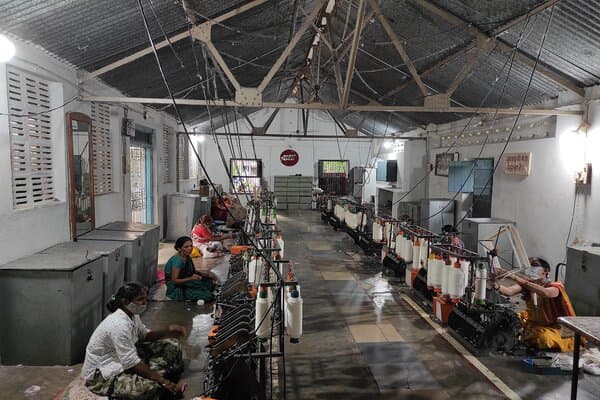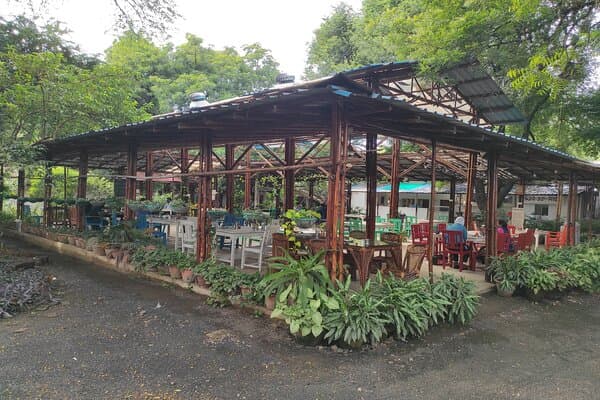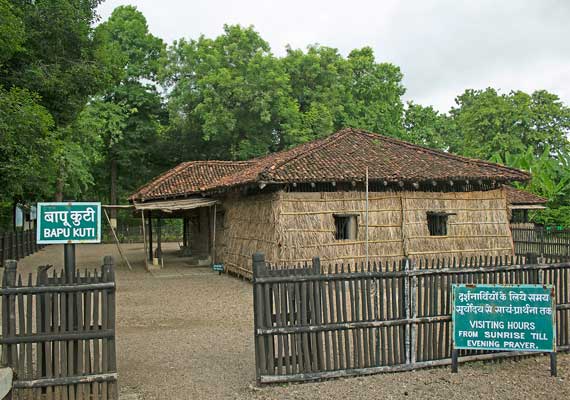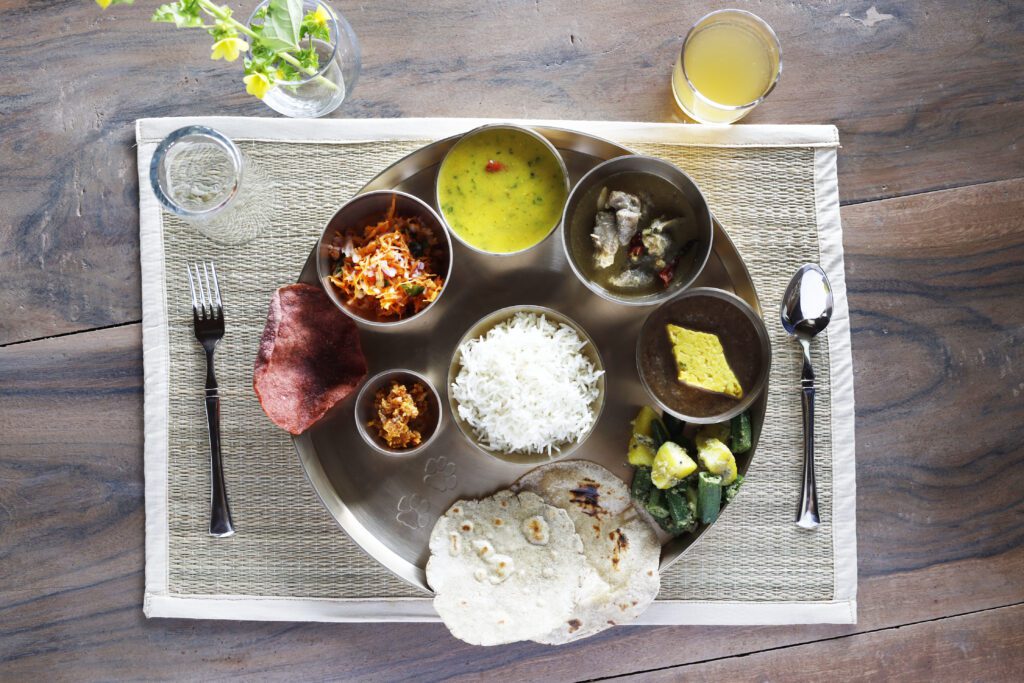Discovering Sevagram, the village established by Mahatma Gandhi, Magan Khadi for authentic Khadi products is a must.
“You may be sure I am living now just the way I wish to live. What I might have done at the beginning, had I more light, I am doing now in the evening of my life, at the end of my career, building from the bottom up. Study my way of living here, study my surroundings, if you wish to know what I am. Village improvement is the only foundation on which conditions in India can be permanently ameliorated. —Mahatma Gandhi
Sevagram, a village nestled in the outskirts of Wardha city was established by Mahatma Gandhi. Now, after all these years, the village stands as a symbol of the culture cultivated by Gandhiji during his stay from 1936 till he breathe his last in 1948.
Hailed as one of the underrated places, it’s a perfect getaway to immerse in tranquility and escape the hectic city life. The place where Gandhiji resided for around 10 years manifests simplicity, serenity, and the ideologies established by Mahatma Gandhi.
Sevagram which translates to the ‘village of service’, was once the headquarters of Gandhiji. The village resonates with the teachings, and struggle of Gandhi and his way of living as a commoner during his time in the ashram. It is said that Mahatma Gandhi announced the verdict on innumerable matters of national importance during the freedom struggle in this Ashram.
Our Naturalist in Wagobha Eco Lodge, Mughda Despande shares a few interesting facts about Sevagram. Read more on Sevagram before you plan your visit.
Tracing the history of Sevagram
The village, Sevagram, formerly known as Segaon is where Gandhiji established his residence in 1936. He pledged not to return to Sabarmati till India achieved independence and settled in this small village at the request of Jamnalal Bajaj. Bajaj donated land spreading across 300 acres to construct the establishment. In this quaint village of Sevagram, several major national decisions and movements were conceptualized and executed. It became the focal point for a variety of institutions involved in nation-building efforts, and it remained the focus of Gandhiji’s work until India gained independence.
Nomenclature of the village
Gandhiji renamed the village Sevagram later which translates to the village of service. When Gandhiji arrived in Sevagram, the location lacked any amenities, including a post or telegraph office. As a result, Gandhiji’s mails were frequently misdirected. He renamed the village Sevagram and continued to work for freedom from the British establishment.
Every day affair at Sevagram
The visitors come up close with the everyday affairs in the village developed by Gandhiji. The daily routine in the Ashram still remains the same with a bit of change. The staff starts their day with prayer at sunrise after which the gate of the Ashram opens for the visitors. The staff proceeds with their respective roles in different organizations within the Ashram. Continuing the routines, the residents engage in the daily routines of prayer, spinning, manual labor, cleaning, and farming.
The Ashram is maintained and preserved in its original form to let the visitors experience its authenticity. Every day between 2.00 to 2.30 PM, visitors are welcomed to learn to use Charkha. The day ends at sunset after prayer and the gate of the Ashram is closed post-sunset.
Understand Nai Talim
Nai Talim, new or basic education followed in the school emphasizes learning beyond the walls of the classrooms. The school continues with the legacy of Mahatma Gandhi and uses the real world as a classroom, as conceptualized by Gandhiji.
One gets a glimpse of the ashram’s school Anandaniketan, run by an organization, Nayitalim Pratishthan. The school’s pedagogy focuses on strengthening ‘Buniyadi Shikshan’. With an aim to provide a self-sustainable foundation for the students, they are trained in accounting, farming, marketing, weaving, cooking among many other skills.
On some special occasions, the school initiates various competitions, exhibitions of the art made by kids, and events for students. If you happen to visit on one of the event dates, you can experience the work exhibited by the students.
Revisit history in Ashram Museum
The Ashram houses a museum, a bookstall, a library, the huts and are accessible by the visitors. To understand Gandhiji’s The museum has historic documents and the materials used by Gandhiji on display. As Gandhiji spent a good number of his years in this Ashram, the museum displays the letters written by Gandhiji, and also the ones received by him. His principles, ideologies, and contributions are on display for the visitors. The museum resonates with the philosophy Gandhiji embraced during his days in the Ashram.
The ashram exhibits Gandhiji’s personal belonging kept intact for visitors to experience his presence. A Charkha, a Khadau, (wooden sandals), his walking stick, a telephone booth, and many of his other personal belonging are kept in a hut in the Ashram.
Read in peace at Ashram’s Library
The library near the Ashram has a dedicated section for Gandhiji’s collection of books. The library, managed and owned by Sarva Seva Sangha has organized the books of Gandhiji under the ‘Gandhi Seva Sangha’ section. The Ashram has a Gandhi Photo Gallery that showcases the rare and historic photos of Mahatma Gandhi from across the world. If you are an ardent follower of Gandhiji and live by his philosophy, the trip to Sevagram can be planned on Gandhi Jayanti or a date of historic importance. The Ashram organizes programs commemorating significant dates and events in Gandhiji’s life.
Witness the simplicity of the Huts
The huts once occupied by Gandhiji and his aides have been kept in their original shape, and still lack basic amenities like electricity. It was in these huts where ideas shaped up, and historic decisions were made during the pre-independence period. The visitors revisit Gandhiji’s narrative when they enter these huts in the Ashram. The ashram management has kept the personal belongings of people who had stayed there, along with its history.
The huts have been named Adi Niwas, Bapu Kuti, Ba Kuti, Mahadev Kuti, Kishore Bhavan, Prachure Kuti, Akhri Niwas, Rustom Bhavan. Their name is derived from the people who occupied these huts. Adi Niwas his initial place of residence in Sevagram. Before leaving for Noakhali, from where he never returned, Gandhiji spent a few days here, hence it’s named Akhri, Niwas, or the last residence. Rustom Bhavan is a four-room guest house on the campus that is open to visitors.
Spend a night by the Ashram
The visitors can spend a night or more as per their preference on the premises of the Ashram. The rooms in Yatri Niwas are open to visitors who wish to spend some night here. The ashram also has a dairy farm and organic kitchen garden. If you happen to stay a night here, the common dining area allows visitors to experience simple food sourced from these farms.
Reaching Sevagram
Located 8 km away from Wardha city and 75 km from Nagpur, Sevagram attracts a good number of visitors. Pugdundee Safari’s Wagobha Eco Lodge is 2 hrs away from this place of historic importance. We encourage our guests who stay with us at Tadoba National Park to explore Sevagram and understand the teachings of Gandhi and immerse in the humble life he lived with limited resources.
Understanding the making of Khadi in Magan Khadi
Another place that practices Gandhiji’s Swadeshi Spirit is Magan Khadi, an abode for exquisite handloom collection. Magan Khadi, run by Magan Sangralaya Samiti trace back to the days of Gandhiji in Sevagram. Magan Khadi is in proximity to Sevagram. The visitors who come to see Sevagram can explore the nearby Magan Khadi and witness the process of producing Khadi fabric from the scratch.
Besides, Magan Khadi is a place to explore an array of sarees and stoles of different natural prints, shirts to bed covers, all made from organic cotton. Magan Khadi is a hub for understanding Gandhiji’s role in reviving Khadi for employment generation and becoming self-reliant.
According to the Director of Magan Khadi, Gandhiji shouldered the responsibility of establishing a rural technology museum to Maganlal Gandhi, a nephew, and confidante of Gandhiji. Magan Sangralaya Samiti, an NGO worked on the different rural enterprises to create employment opportunities. Khadi projects were one of the enterprises the Samiti worked on to empower the villagers.
Why are Khadi products ‘expensive’?
“There is a misinterpretation that khadi products are more expensive than the ones available easily in the market. Our price for a shirt made of single-thread fabric begins at Rs 700. Compare it to a shirt from any fast fashion brand that sells for Rs 1000-1200 roughly. Khadi products are not always expensive. Sometimes the price of the product tends to be on the higher side because of the process involved in completing a shirt. The whole process is handmade. Take a handloom Khadi saree and compare it to a synthetic one, the khadi one will definitely last longer. Since the product is handmade, the quality is anytime superior, “ adds the Director.
He opines that youngsters these days are becoming aware of the importance of Khadi. As the designs are getting more interesting, the younger generation is investing in owning a Khadi product.
“At Magan Khadi, we do have people of all ages buying Khadi items. However, we lack the support of professional designers. We are interested in working with someone who wishes to contribute to the development and expansion of Khadi through a collaborative venture,” adds Mukesh.
Witness the process of making a Khadi fabric
Over 60 farmers in Samudrapur and Arvi supply Magan Khadi with raw organic cotton. In the Girad unit, raw organic cotton is ginned, roved, and spun into silver. At their centers, solar spinning, weaving, the development of organic dyes from natural substances, and the creation of completed products and clothes are all done entirely in-house.

Completing a khadi fabric spans seven different stages, completely a handmade process. Here are the seven different processes invoiced in producing a fabric that the visitors can witness at Magan Khadi.
A khadi product goes through different stages of Ginning, carding, Spinning, Reeling, Warping, weaving, dyeing, and printing.
Magan Khadi, a symbol of Rural Livelihoods and sustainability
Choosing a khadi product is equivalent to contributing to rural employment and also ensuring sustainability. At Magan Khadi, right from the cotton to the last process of packaging is completed by locals. The villagers are trained in different stages of weaving, dyeing, and printing to ensure community-based rural livelihoods.
“We adhere to Farm to Fabric concept, and procure the raw material from local farmers. The employees engaged in different stages of developing khadi products are also employed from nearby villages,” shares the Director of Magan Khadi, Mukesh Lutade.
The necessity of returning to nature by limiting the use of chemicals in everyday life finds fresh relevance in the manufacture of organic khadi, thanks to the sustainable manufacturing technologies now accessible, as well as their minimal carbon footprint. The entire process, from cotton collection to final product production, takes place in the same location, reducing carbon emissions and generating employment opportunities for locals.
Learn to identify Khadi’s authenticity
One of the difficulties while shopping for a handloom fabric is understanding its genuineness. A trip to Magan Khadi can help to enhance your knowledge in understanding Khadi’s authenticity.
In comparison to a machine-woven textile, the ends of a khadi cloth are usually soft and loose. So take a piece of it and twist it in the yarn’s direction. The cloth is khadi if the threads tighten. It’s handloom or mill-spun if it comes loose. The employees of Magan Khadi share with their visitors the difference to look for while buying a khadi product.
Magan Khadi and Pugdundee Safaris
Local communities are losing their cultural values as a result of evolving technologies and development. Thus, it is critical to protect them. At Pugdundee Safaris, we promote local communities and their culture and step in to promote whenever we see an opportunity. The products made in Magan Khadi, such as pillow covers and linens are used at our lodge. We also sell their goods in our nature shop.

Besides Khadi products, Magan Khadi also promotes local and regional cuisines in their outdoor café. If you are into organic products, they also have an outlet selling organic farm products at reasonable rates.
So, next time you are in or around Wardha, a visit to Magan Khadi is a must. If you are visiting us in Waghoba Eco Lodge in Tadoba Andhari Tiger Reserve, then planning a day out to Sevagram and Magan Khadi will complete your trip.
Written by Mugdha Despande, edited by Tamanna Tamang.
Get in touch with our trip curators to plan your visit at [email protected], +91 9873879913.


